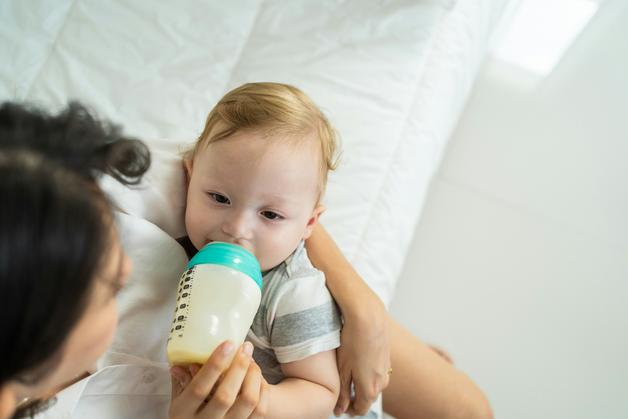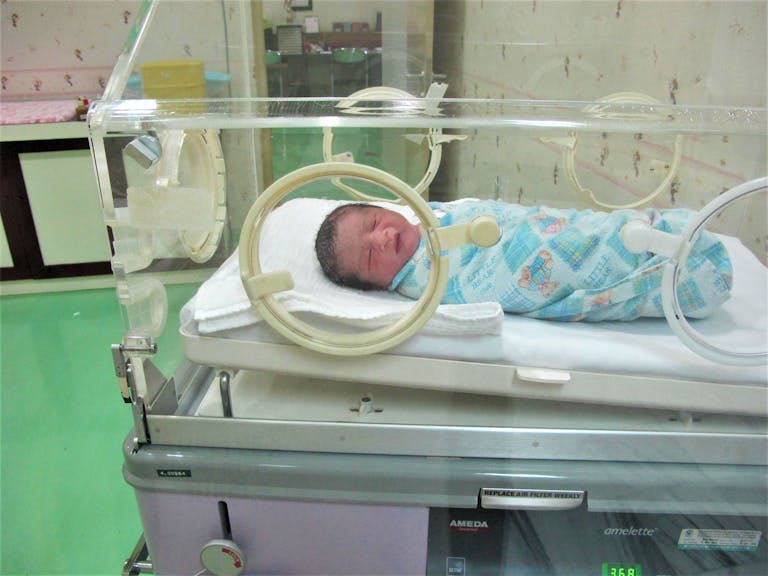Juggling feeding routines, returning to work, and the unpredictability of daily life—breast milk storage often becomes a central concern for parents striving to keep their child nourished while managing countless other priorities. Have you ever wondered how to protect the nutritional value of every drop your baby receives, or worried that missed details in storage might affect your little one’s health? Questions spiral: What about storage temperatures? Is bag, bottle, or glass better? Are flavor changes harmless? With medical and scientific detail, a deeply practical mindset, and a compassionate understanding of your daily challenges, you’ll find clarity and reassurance among concrete, evidence-based strategies.
Hygiene and Storage: Where Safe Feeding Begins
Breast milk storage starts long before the first drop meets the fridge. Imagine this: unwashed hands, a kitchen cluttered with last night’s dishes, pump parts on a drying rack. The smallest lapse in hygiene can introduce bacteria, threatening the powerful anti-infective properties of breast milk. So, what’s the gold standard? Wash hands with warm soapy water for at least 20 seconds. Every pump accessory—be it silicone, plastic, or glass—requires careful cleaning: a cold pre-rinse, hot soapy scrub, thorough air drying, and—especially for babies at greater risk—sterilization through boiling or specialized devices. Any shortcut increases risk.
Selecting the right container matters—a lot. BPA-free breast milk storage bags, sturdy glass, or medical-grade plastic bottles? All must have airtight lids and, above all, never repurposed food containers. Label each vessel with the date and, if needed, your baby’s identification. Why insist? Because milk’s immunological potency and safety decrease with time despite its remarkable durability.
The Nutritional Marvel: Composition, Preservation, and Risk Factors
Dive into the biology: breast milk teems with bioactive compounds, living cells, and enzymatic machinery designed by nature. There are immunoglobulins (antibodies), lactoferrin (which binds iron to starve germs), and lipase enzymes (which sometimes alter taste if milk is stored too long or improperly). The mix seems delicate, doesn’t it? High temperatures or fluctuating freezer environments can denature proteins, zap enzymes, or allow bacteria to multiply. Studies highlight: even a couple of hours at marginal warmth can deplete bifidobacteria—the “good” bacteria nurturing a baby’s gut.
Is all storage equivalent? Absolutely not. Rule of thumb: prompt refrigeration within four hours at room temperature (up to 77°F/25°C) fiercely preserves those invisible nutrients. Pushed to eight hours? Risk edges upward—especially if hygiene stumbles.
Mastering Time and Temperature: Guidelines You Can Trust
Timelines create structure—vital for busy days. Here’s a breakdown, supported by the Centers for Disease Control and Prevention and relevant scientific societies:
- Room temperature (≤25°C/77°F): Up to 4 hours is generally safe; rare exceptions extend to 6 hours, if the milk is freshly expressed and handled scrupulously.
- Refrigerator (≤4°C/39°F): 3 to 4 days maintains optimal safety and nutrition, but up to 8 days may be feasible for meticulously collected milk.
- Freezer (≤-18°C/0°F): 6 months is gold-standard; up to 12 months in a deep freezer is scientifically acceptable, but closer to 6 months retains more bioactivity.
Always store containers at the back of the refrigerator or freezer, not the door—temperature swings are silent threats. Need to travel? An insulated cooler bag with frozen ice packs holds milk for up to 24 hours. On arrival, straight into cold storage.
But what of mixed milk—adding fresh to chilled? Always cool new milk in the fridge before combining, minimizing bacterial growth and enzyme degradation.
Thawing and Warming: When Milk Leaves the Freezer
Imagine the hurried morning. You forgot to thaw tonight’s feed, and the baby’s hunger clock ticks mercilessly. Can you rush it? Best not. The safest protocol: melt frozen milk overnight in the fridge. For faster results, a bowl of warm (not hot) water or gently running warm tap water works. Never use a microwave—its uneven heating destroys vital immunological factors and can leave dangerous hot spots.
Once thawed, swirl gently to mix separated fats. Reshaking? Unnecessary and can disrupt delicate proteins. Always test temperature with a drop on the inner wrist—a small but meaningful ritual. Unfinished bottles must be discarded within 1–2 hours after the feed; oral bacteria accelerate spoilage, invisible to the eye.
Preventing Spoilage: Recognizing Safe and Unsafe Changes
Milk in the fridge sometimes surprises parents: layers separate, colors shift from cream to blue-grey, and unfamiliar smells—soapy or metallic—arise. What’s normal? These changes often signal natural lipase activity, not danger. But sour, rancid, or curdled appearances—especially after gentle mixing—are red flags. The bottom line: when in doubt, err on the side of caution and discard.
Inspect each container: leaks, hairline cracks, and faulty seals sometimes release precious milk or increase the risk of contamination. All seem like minor details—until a morning rush turns tragic over a spoiled bottle.
Special Circumstances: Preterm and Medically Vulnerable Babies
Preterm infants or babies with health challenges live in a world of precise protocols and heightened risks. For them, the margin of error narrows. Sterilization of every item is more than best practice—it’s a medical priority. Hospital guidelines may recommend shorter refrigeration times (48–72 hours) and additional labeling details. Donor milk—obtained from licensed milk banks—undergoes stringent screening and pasteurization, then ultra-cold storage. For parents who must deliver milk to caregivers or hospitals, insulated carriers and prompt transfer to cold storage are non-negotiable steps.
Container Choice: Science and Practicality
Decisions about containers echo through every feed. Breast milk storage bags are practical and space-saving, yet vulnerable to leaks if mishandled. Glass jars provide environmental peace of mind and inert storage, but breakage remains a hazard. Medical-grade plastic—free of BPA or other potentially disruptive chemicals—offers compromise. Always freeze in small volumes (30–90 ml/1–3 oz); smaller batches mean less waste and swifter thawing. Label every portion with the date and, if necessary, your child’s identifier for communal settings.
Common Mistakes (And How to Dodge Them)
A moment of inattention—an unlabeled bag, a skipped cleaning step, an inappropriate container—can unravel the hard work of expression and careful feeding. Other pitfalls include microwaving milk (damaging nutrients and risking burns), re-freezing thawed milk (increased bacterial load, diminished bioactivity), and retaining leftovers from bottles (rapid spoilage). Every shortcut has a cascade of effects; the safest approach is consistency.
Practical Organization: Routines, Rotation, Real Life
Life gets hectic—systems prevent chaos. Freeze the newest milk behind existing stock for automatic rotation. Maintain a paper log or use a breastfeeding app to track stored quantities and dates—especially if others help with feeding or daycare. Brief all caregivers, from grandparents to daycare staff, on hygienic practices and safe warming procedures.
Planning nightly bottles for daycare reduces morning stress and supports safe, timely use of your breast milk storage inventory. Reducing cognitive load, these habits free up time and energy for connect with your baby—far more precious than any system or gadget.
Key Takeaways
- Breast milk storage connects science and daily life, shielding both nutritional integrity and parental peace of mind.
- Unwavering hygiene remains the first and most important line of defense; clean everything, every time.
- Use breast milk storage containers—BPA-free bags, glass, or medical-grade plastic—always labeled and sized to match typical feeds.
- Timing matters: up to 4 hours at room temperature, 4 days (or less) in the refrigerator, and up to 6–12 months in the freezer. Always use the oldest supply first.
- Warm milk with water—not microwaves—and swirl gently. Discard leftovers within two hours post-feed.
- If you notice persistent changes in odor, appearance, or flavor, prioritize safety—consult your pediatrician or an International Board Certified Lactation Consultant (IBCLC) if questions linger.
- Ready to simplify safe feeding? The Heloa app provides tailored advice and free health questionnaires for your child—expertise in your pocket, every day.
The scientific backbone of breast milk storage meets real-world parenting: thoughtful systems, careful handling, and medical insight come together to nurture your baby’s future—one feed at a time.
Questions Parents Ask
Can I mix freshly expressed breast milk with already refrigerated milk?
Absolutely, you can combine freshly expressed milk with milk that’s already been cooled in the fridge. To do so safely, always chill the new milk first—this helps reduce the risk of bacterial growth. Once both batches are at the same cold temperature, they can be merged in the same container. Don’t forget to label with the oldest date to help keep track of storage times. If you have any doubts about practices, a lactation consultant or healthcare provider can always offer personal guidance for peace of mind.
Is it safe to refreeze thawed breast milk?
It’s reassuring to know that you’re looking out for your baby’s health. Once breast milk has been thawed from the freezer, it is recommended not to refreeze it. This helps prevent nutrient loss and limits the risk of bacteria developing. If you find you have thawed more than your baby will take, simply try to offer smaller portions next time. Remember, leftover milk from a fed bottle should be used within 1–2 hours, and any unused portion is best discarded to keep your baby safe.
How can I tell if stored breast milk has gone bad?
It’s quite common to feel unsure about changes in stored milk. Signs that breast milk may no longer be good include a sour or unusual smell, clumping or separating that doesn’t re-blend with gentle swirling, or a noticeable change in texture. Sometimes, stored milk can have a soapy or metallic odor due to natural enzymes, but these shifts are generally harmless. When in doubt, trust your instincts—discard milk if anything seems off. Your attentiveness is already a big step in keeping your baby well-nourished and safe.

Further reading:









